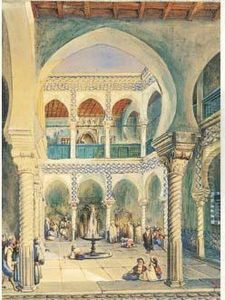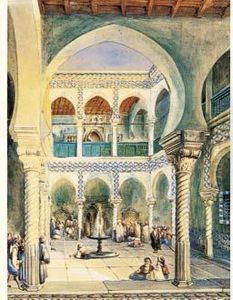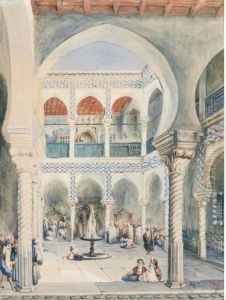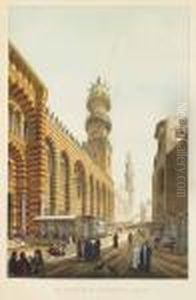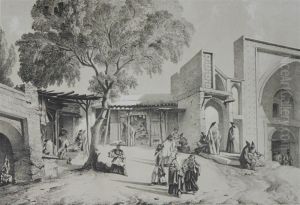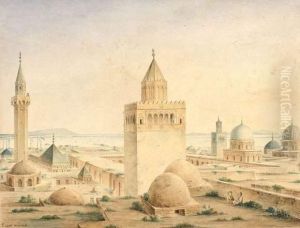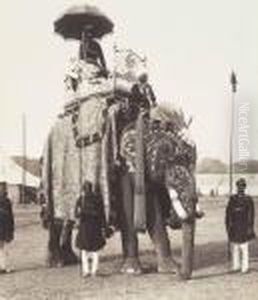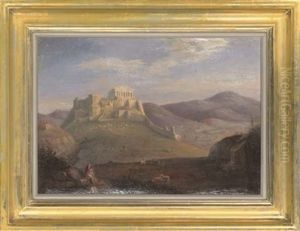Pascal Coste Paintings
Pascal Coste was a prominent French architect and engineer born on November 26, 1787, in Marseille, France. He is particularly known for his extensive travels and architectural studies in the Middle East, which had a significant influence on his work and on the European understanding of Islamic architecture. He attended the École Nationale Supérieure d'Architecture de Marseille, where he was trained in the neoclassical tradition that was popular during his time.
In 1817, Coste embarked on a significant journey to Egypt as part of a scientific and artistic mission during the rule of Muhammad Ali Pasha. He worked there as an architect and engineer, taking part in several projects and gaining firsthand experience of Middle Eastern architectural styles. He meticulously documented the buildings, monuments, and landscapes he encountered, which he later published in his influential work 'Architecture Arabe ou Monuments du Kaire, mesurés et dessinés, de 1818 à 1826' (Arab Architecture or Monuments of Cairo, Measured and Drawn from 1818 to 1826), published in 1837.
His publications were richly illustrated with lithographs based on his detailed drawings and observations, providing a comprehensive survey of Islamic architecture in Egypt. These works were among the first systematic studies of Islamic architecture by a European and contributed to the Orientalist movement in European art and architecture during the 19th century.
After returning to France, Pascal Coste continued to work as an architect, contributing to various civic and private projects. He was appointed as the chief architect for the department of Bouches-du-Rhône and was involved in the construction of numerous buildings in and around Marseille.
Coste's architectural legacy is characterized by the blending of neoclassical principles with elements inspired by his studies of Islamic architecture. His work helped to bridge cultural divides and fostered a greater appreciation of Middle Eastern architecture in the West. Pascal Coste passed away on February 7, 1879, in Marseille, leaving behind a rich legacy as both an architect and a scholar of the architectural traditions of the Islamic world.
